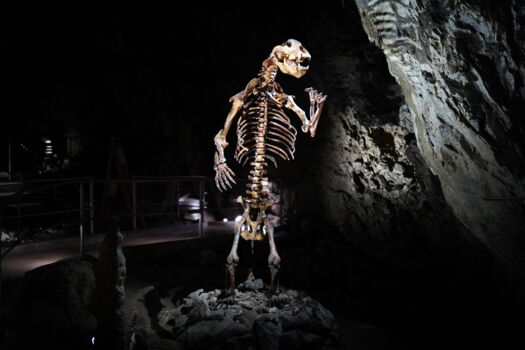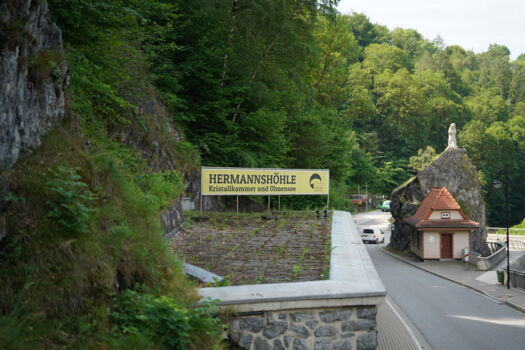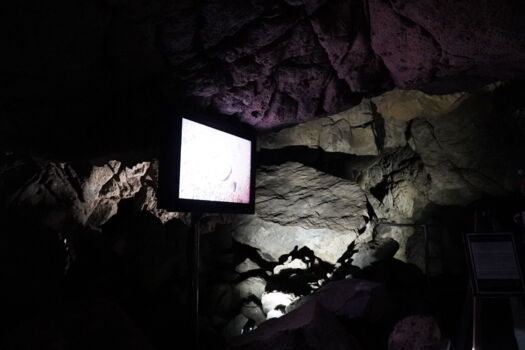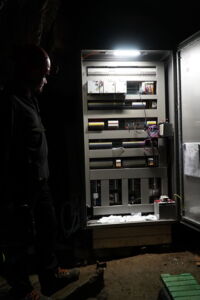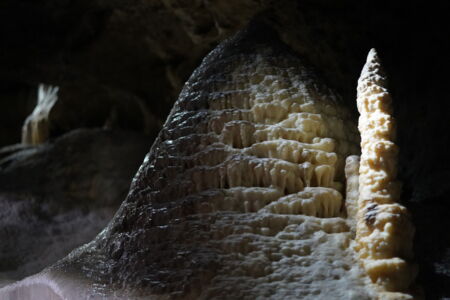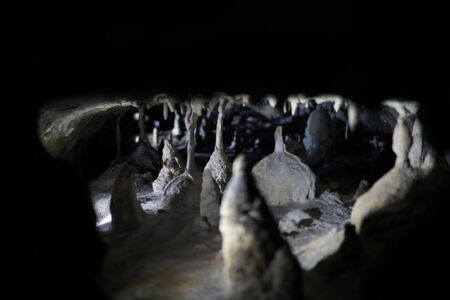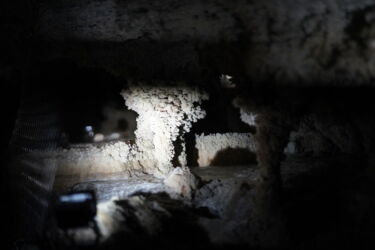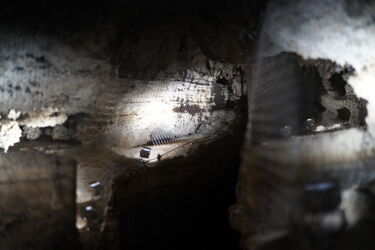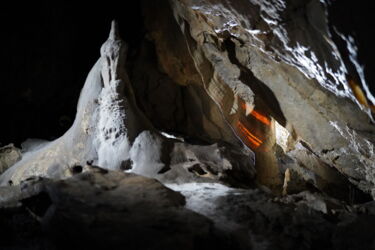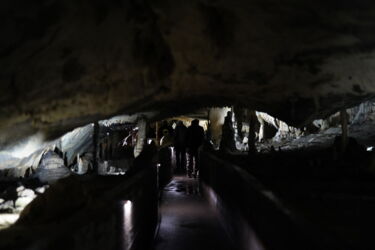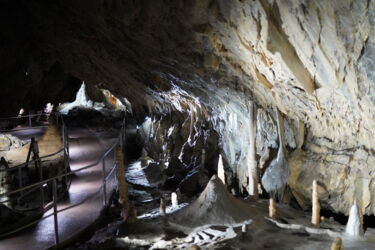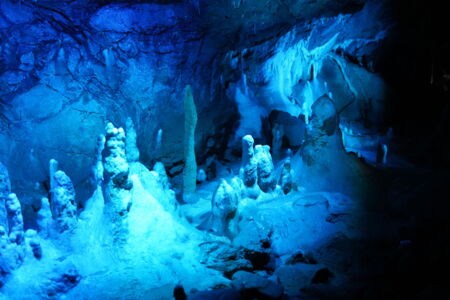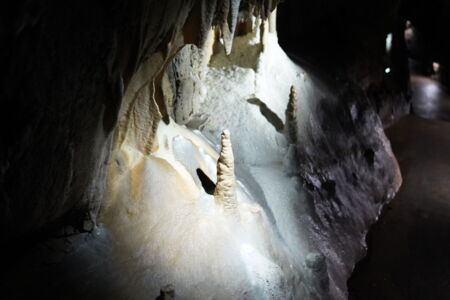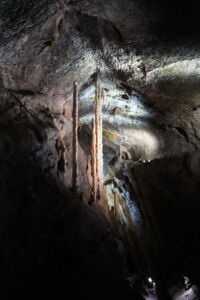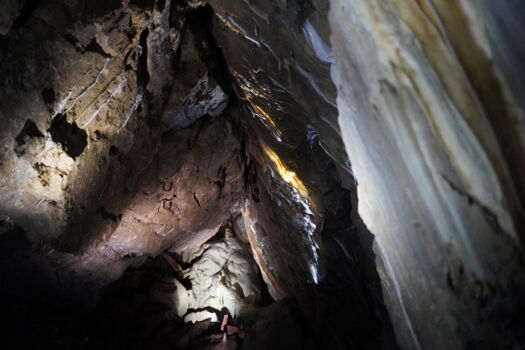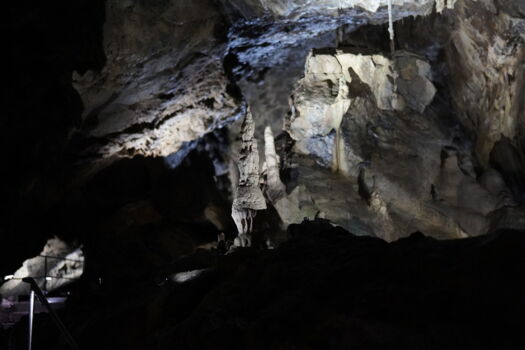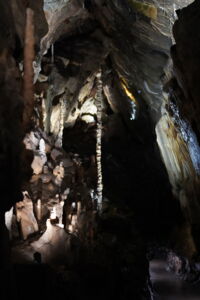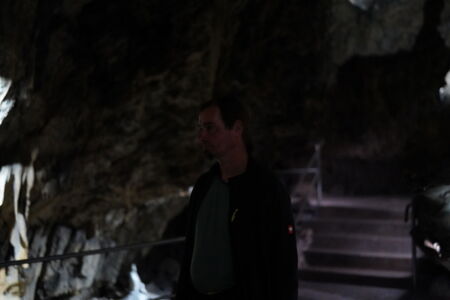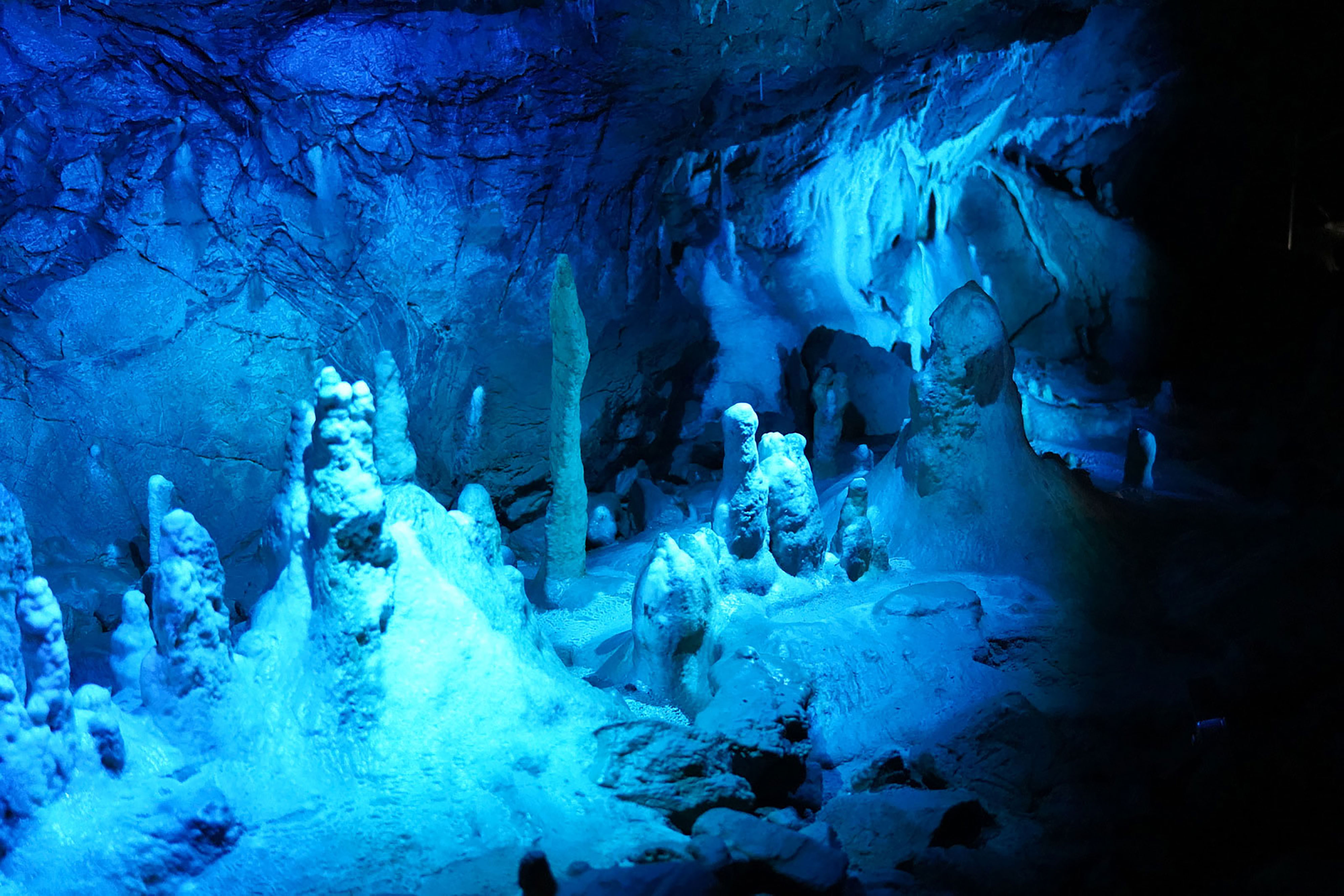
Relighting of the Hermann’s cave in Ruebeland (Harz)
Relighting of the Hermann’s cave in Ruebeland (Harz).
15 years from the beginning until the end of the project.
Part 1: Hermann’s cave Ruebeland, information’s.
Show cave since: 1890
The total length of the show cave section: 750.00 meters
Visitor numbers: approx. 80,000 per year
The cave was formed in the Devonian limestone of the Elbingerode complex in connection with the formation of the Bodetal valley. It was discovered on June 28, 1866 by Wilhelm Angerstein (nickname: Sechserding), a road inspector from Neuwerk, while clearing rubble and debris on the mountain side of the Hasselfelder Road.
Other sources and contemporary witnesses suggest that Fritz Sorge from Ruebeland was already familiar with the cave before Angerstein and had uncovered the narrow entrance.
The very next day, the uncovered entrance was fitted with a door. The cave was opened to visitors on May 1, 1890.
Due to its early closure, the rich stalactite decoration is still largely preserved. The cave became famous for the numerous cave bear bones found here. The cave was extensively explored by Johan Herman Kloos, Robert Nehring (1888) and Friedrich Stolberg (1932). During the numerous explorations since 1970, a large number of unknown cavities have been discovered and measured.
Hermann's Cave is famous for its cave olms. 5 specimens originating from Istria were relocated from there to Rübeland in 1932 at the instigation of Rübeland cave director Bernhard Lange and geologist Dr. Walter Biese. For display purposes, they were placed in an artificial cave lake ("Olmensee"), which has a depth of around 80 centimeters and a permanent water temperature of 7 °C.
The animals came from the Adelsberg Cave in Postojna, Slovenia.
In 1956, the Ruebeland cave explorers Wolfgang and Ingeburg Reichel obtained a further 13 olms in the Adelsberg Grotto/Postojnska Jama in Slovenia and transported them to Ruebeland, where they were initially kept in a small quarantine station. In January 1957, they were then released into Lake Olmen to join the three olms still present at the time.
In 1978, a breeding tank was built and on this occasion it was discovered that the Olmen that could be found were all males. In 1985, during a clean-up of Lake Olmen, 13 males were caught, presumably all from the 1956 import.
In January 2015, the French olm expert Olivier Guillaume carried out another sexing of the animals. It turned out that 5 of the 9 grotto olms examined were pregnant females. In 2020, 3 males were discovered in a population of 7 specimens and 4 fertilized eggs were found in the oviduct of one of the 4 females.
Source: https://de.wikipedia.org/wiki/Hermannsh%C3%B6hle_(Harz)
Part 2: History, first steps.
Cave Lighting first encountered the Hermann’s cave in Ruebeland, Harz, at the very beginning of its work as a show cave lighting company. After illuminating the Kalkberg Cave in Bad Segeberg, a request was received from Ruebeland in 2008. They wanted to illuminate an area of the Hermann’s cave, the Crystal Chamber, with accentuated LED lighting instead of halogen lights. At the time, Cave Lighting had only supplied the luminaires for the project. The installation was then carried out by the cave's own electrician.
4 years later, a new request came in to carry out a lighting test and calculate a budget for the entire project. With the help of the speleologists from Gosslar and Ruebeland, Cave Lighting carried out extensive tests in the show cave and submitted initial calculations for the project.
After a dormant period of 7 years, until 2019, the lighting in the crystal chamber was due to be replaced. It was discovered that the electrician had made a number of mistakes during the installation in 2008, as the installation was not watertight. Over the course of 11 years, the lights had soaked up water via the cables and corroded from the inside. This led to the lighting in the crystal chamber being replaced. In addition, care was taken to design the installation so that it could be extended, so that the already installed application could be integrated into the new system when the system was renewed at a later date.
Part 3: Project and its steps.
Three years later, at the end of 2021, we came closer to realizing the project. The rough cost estimate of the overall project had been revised, the technical requirements had been established and the client had started planning the project. However, the renewed task was defined in such a way that the installation was to be calculated and planned in three steps and the project was to be realized step by step within 2 - 3 years. Engineering firm HESA was commissioned to plan the project and the tender was issued in summer 2022. As already mentioned, the project was put out to tender in three stages:
- Construction phase 1: Olmengrotte - Beehive
- Construction phase 2: Beehive - Exit
- Construction phase 3: Entrance - Olmengrotte
We began with the first construction phase in September 2022 and completed this work in October. The first section involved the rear area of the show cave, where the most beautiful stalactites and the passage into the crystal chamber are located. With this section installed, the show cave then went into its winter break.
In spring 2023, the management of the show cave decided that sections 2 and 3 should be installed together, preferably before the 2023 peak season. No sooner said than done. Cave Lighting started the installation work in April 2023. This took two months. During installation, care should be taken to ensure that the grotto olms living there are correctly illuminated with the red lights that can be switched on. As visitors are not always able to see the cave olms, we also installed a cave television and integrated it into the system. The device then shows a looped video sequence about the cave olms and their life in the cave.
In June, the final programming and approval of the system in the show cave was carried out by TÜV Nord. Since July 2023, thousands of tourists have been able to admire the show cave in a completely new light and look.
Part 4: Implementation and customized solutions.
What was technically different about the system?
As the installation was started during COVID, the show cave was a show cave without a guide. Visitors were allowed to walk through the show cave on their own and explore the cave. To make this even more exciting, Cave Lighting was to integrate control of the system via microwave sensors so that the light in the respective areas is only switched on when visitors enter the area. In the future, it should also be possible to switch the tour from unguided to guided.
The system has therefore been equipped with automation, PLC + network and several setting options have been installed. The system currently has the following modes: low season, high season, unguided, guided, service.
Some technical details of the system:
|
Lights type CL-LSQ2 |
3.5 watt 250 lumen |
367.00 pieces |
|
Lights type CL-LQP2 |
13 Watt 1200 Lumen |
11.00 piece |
|
Luminaires type CL-LMT |
1 watt 60 lumen |
230.00 piece |
|
Controller type CL-CN2 |
8 channel CaveLighting protocol |
11.00 piece |
|
Button controller type CL-CP2 |
8 channel 4 buttons CaveLighting protocol |
12.00 piece |
|
Motion detector type CL-BMR |
Microwave sensor |
15.00 piece |
|
Radio receiver type CL-RR |
430 MHz Radio Receiver |
15.00 piece |
|
Sub-distributor type UV- |
230 VAC/24VDC distributor |
2.00 piece + 1.00 tab |
|
Length of the guide path |
Hermann‘s show cave |
658.00 meters |
Cave Lighting Team
April 2024

